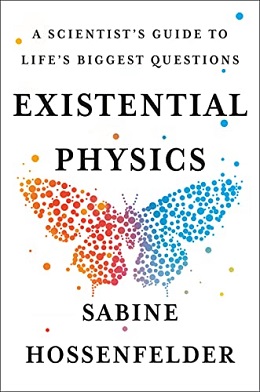
Max Erik Tegmark is a Swedish-American physicist, machine learning researcher and author. He is best known for his book Life 3.0 about what the world might look like as artificial intelligence continues to improve. Tegmark is a professor at the Massachusetts Institute of Technology and the president of the Future of Life Institute.

The University of Göttingen, officially the Georg August University of Göttingen, is a distinguished public research university in the city of Göttingen, Germany. Founded in 1734 by George II, King of Great Britain and Elector of Hanover, it began instruction in 1737 and is recognized as the oldest university in Lower Saxony.

Frank Anthony Wilczek is an American theoretical physicist, mathematician and Nobel laureate. He is the Herman Feshbach Professor of Physics at the Massachusetts Institute of Technology (MIT), Founding Director of T. D. Lee Institute and Chief Scientist at the Wilczek Quantum Center, Shanghai Jiao Tong University (SJTU), distinguished professor at Arizona State University (ASU) and full professor at Stockholm University.

Dame Susan Jocelyn Bell Burnell is an astrophysicist from Northern Ireland who, as a postgraduate student, discovered the first radio pulsars in 1967. The discovery eventually earned the Nobel Prize in Physics in 1974; however, she was not one of the prize's recipients.

Lisa Randall is an American theoretical physicist and Frank B. Baird, Jr. Professor of Science at Harvard University. Her research includes the fundamental forces of nature and dimensions of space. She studies the Standard Model, supersymmetry, possible solutions to the hierarchy problem concerning the relative weakness of gravity, cosmology of dimensions, baryogenesis, cosmological inflation, and dark matter. She contributed to the Randall–Sundrum model, first published in 1999 with Raman Sundrum.

VictorFrederick "Viki" Weisskopf was an Austrian-born American theoretical physicist. He did postdoctoral work with Werner Heisenberg, Erwin Schrödinger, Wolfgang Pauli, and Niels Bohr. During World War II he was Deputy Division Leader of the Theoretical Division of the Manhattan Project at Los Alamos, and he later campaigned against the proliferation of nuclear weapons.

"Galaxy Song" is a Monty Python song written by Eric Idle and John Du Prez.

The Trouble with Physics: The Rise of String Theory, the Fall of a Science, and What Comes Next is a 2006 book by the theoretical physicist Lee Smolin about the problems with string theory. The book strongly criticizes string theory and its prominence in contemporary theoretical physics, on the grounds that string theory has yet to come up with a single prediction that can be verified using any technology that is likely to be feasible within our lifetimes. Smolin also focuses on the difficulties faced by research in quantum gravity, and by current efforts to come up with a theory explaining all four fundamental interactions. The book is broadly concerned with the role of controversy and diversity of approaches in scientific processes and ethics.

The Nordic Institute for Theoretical Physics, or NORDITA, or Nordita, is an international organisation for research in theoretical physics. It was established as Nordisk Institut for Teoretisk Atomfysik in 1957 by Niels Bohr and the Swedish physicist Torsten Gustafson. Nordita was originally located at the Niels Bohr Institute in Copenhagen (Denmark), but moved to the AlbaNova University Centre in Stockholm (Sweden) on 1 January 2007. The main research areas at Nordita are astrophysics, hard and soft condensed matter physics, and high-energy physics.
The Foundational Questions Institute, styled FQxI, is an organization that provides grants to "catalyze, support, and disseminate research on questions at the foundations of physics and cosmology." It was founded in 2005 by cosmologists Max Tegmark and Anthony Aguirre,. It has run multiple worldwide grant competitions, the first of which provided US$2M to 30 projects. It also runs frequent essay contests open to the general public with $40,000 in prizes awarded by a jury panel and the best texts published in book format.

Rainbow gravity is a theory that different wavelengths of light experience different gravity levels and are separated in the same way that a prism splits white light into the rainbow. This phenomenon would be imperceptible in areas of relatively low gravity, such as Earth, but would be significant in areas of extremely high gravity, such as a black hole. As such the theory claims to disprove that the universe has a beginning or Big Bang, as the big bang theory calls for all wavelengths of light to be impacted by gravity to the same extent. The theory was first proposed in 2003 by physicists Lee Smolin and João Magueijo, and claims to bridge the gap between general relativity and quantum mechanics. Scientists are currently attempting to detect rainbow gravity using the Large Hadron Collider.
Walter Greiner was a German theoretical physicist. His research interests lay in atomic physics, heavy ion physics, nuclear physics, elementary particle physics. He is known for his series of books in theoretical physics, particularly in Germany but also around the world.
Ethan R. Siegel is an American theoretical astrophysicist and science writer, who studies the Big Bang theory. In the past he has been a professor at Lewis & Clark College and a blogger at Starts With a Bang, on ScienceBlogs and also on Forbes.com since 2016.
Sabine Stanley is a Canadian physicist, currently at Johns Hopkins University in the Zanvyl Krieger School of Arts and Sciences Morton K. Blaustein Department of Earth And Planetary Sciences and the Applied Physics Laboratory. She was awarded a Bloomberg Distinguished Professorship in 2017. She was previously a Canada Research Chair of Planetary Physics at University of Toronto. She was awarded the William Gilbert Award by the AGU in 2010 and was awarded a Sloan Research Fellowship in 2011.

Chanda Prescod-Weinstein is an American theoretical cosmologist and particle physicist at the University of New Hampshire. She is also an advocate of increasing diversity in science.
Alessandro Strumia is an Italian physicist at the University of Pisa. His research focuses on high energy physics, beyond the Standard Model, studying the flavour of elementary particle, charge conjugation parity (CP) symmetry violations, and the Higgs boson. In September 2018, Strumia gave a controversial presentation at CERN's first Workshop on High Energy Theory and Gender, where he claimed that male, not female scientists, were the victims of discrimination on the part of universities.

Johanna Barbara Stachel is a German nuclear physicist. She is a professor in experimental physics at the University of Heidelberg. Stachel is a former president of the German Physical Society (DPG).

Brief Answers to the Big Questions is a popular science book written by physicist Stephen Hawking, and published by Hodder & Stoughton (hardcover) and Bantam Books (paperback) on 16 October 2018. The book examines some of the universe's greatest mysteries, and promotes the view that science is very important in helping to solve problems on planet Earth. The publisher describes the book as "a selection of [Hawking's] most profound, accessible, and timely reflections from his personal archive", and is based on, according to a book reviewer, "half a million or so words" from his essays, lectures and keynote speeches.

Something Deeply Hidden: Quantum Worlds and the Emergence of Spacetime is a non-fiction book by American theoretical physicist Sean M. Carroll. The book, his fifth, was released on September 10, 2019 by Dutton.

Existential Physics: A Scientist's Guide to Life's Biggest Questions is a nonfiction popular science book by theoretical physicist Sabine Hossenfelder that was published by Viking Press on August 9, 2022. It focuses on discussing various existential and ethical questions related to scientific topics and explaining their connection to current scientific research or debunking their relevance or possibility to ever be explained by science in the first place. These questions are split into individual chapters and interviews with various scientists are included throughout the book.















